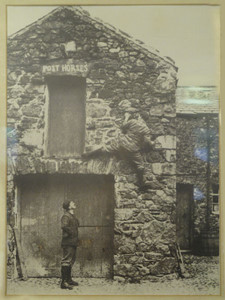TOPICS
|
BILDERING
Buildering is the physical act of
climbing on buildings and other artificial structures. It is also
known as urban climbing or stegophily In the USA it is commonly
known as Structuring. The word "buildering" is a
portmanteau combining the word "building" with the
climbing term "bouldering".
Buildering can take a form of most
disciplines of rock climbing but the most common is bouldering and
bildering tends towards ascending or traversing shorter sections of
buildings and structures. Generally frowned upon by property owners,
some turn a blind eye to it. As with traditional rock climbing,
routes are often established and graded for difficulty, though not
commonly published.
History
Buildering is not a modern
phenomenon it goes a long way back in climbing history. There are
two distinct elements to buildering as far as we are concerned;
climbing buildings as practice for rock climbing and climbing
buildings for no other purpose than, because they are there. Newell
Martin climbed on the Yale campus in the 1870s. The first bildering
guide was written in the 1890's by Geoffrey
Winthrop Young whilst he was at Cambridge University, The
Roof-Climbers Guide to Trinity was publish tongue in cheek in 1900
and Published Eton, 1905, Spottiswood and Co. Ltd. Oliver
Perry-Smith climbed on buildings in Philadelphia after returning
from Elbsandstein in the early 1900.
The birthplace of rock climbing is
always claimed by Wasdale in the English Lake District, and in the
1890's there was already a classic buildering problem.
|
The famous Barn
or Stable Door Traverse at The Wastwater Hotel. The
picture shows Dr. Joseph Collier at the crux, watched by his
frequent companion.
A. E. Field Photo by the Abraham
Brothers. A. Harry Griffin in his book The Coniston Tigers of
2000 describes the problem. “Outside the hotel, in the
inn-yard, was the Stable Door (or Barn Door) Traverse - quite a
gymnastic feat. You had to climb up the rough slabs on the right
hand side of the wall and then make a delicate traverse, on very
poor holds, into the open door about ten feet above the ground."
The Barn is still there today and as
the Abraham Brothers photographs are very famous in the early
development of Victorian rock climbing it is not uncommon to see
tourists having there picture taken in front of it.
According to John Gill, “ Due to
renovation the traverse is no longer possible.” Well there is a
challenge for someone. |
 |
Newspapers
Articles
Newpapers from the early part of
the 20th century contain many examples of Bildering feats mainly
from none climbers. Notable amongst these were climbing feats in the
depression era by people making a living, such as Harry Gardiner,
but also some wonderful stories such as Arthur
Pinners.
in 1901 Kansas boyCalvin Pearl Titus gained fame by Climbing the Walls of Peking.
In
1937 The Night Climbers Guide to Cambridge was Published as The
Night Climbers of Cambridge by Whipplesnaith (1937), Chatto &
Windus Ltd, London.
Middle
Era Bildering or The Golden age of Bildering
The two world wars in the first
half of the last century helped bring down the social class barriers
and rock climbing, that was once dominated by the professional class
and the university students, was opened up to the working class due
to the increase in income and, for the first time, paid holidays.
The first British National Park, The
Peak District, was designated in 1951 opened up the countryside to
the working population of the conurbations of Birmingham,
Manchester, Leeds and Sheffield for the first time. The motorbike at
this era further opened up the countryside and helped the working
class made their mark in rock climbing.
All these events helped rock climbing
and especially local outcrop climbing increase in popularity and of
course when you couldn't get to the crags, buildings were everywhere
and, like G.W. Young or Whipplesnaith, were are obvious draw to
climb on. Bildering was really
helped by the rise of road transport and Dr Richard Beeching. The
Beeching cuts slashed the rail network from the mid 1950's and gave
climbers an enormous amount of urban buildings, bridges and
embankments to be climbed on.
Modern Era Bildering
Since it's hey day in the early 1970's
bildering by genuine climbers has continued to decline with the rise
and use of climbing walls. Bildering is still popular with some die
hard climbers as demonstrated by a certain climbing club holding a
meet at the famous venue of The Pump House in Fallowfield. Recorded
Date - 7th November 2010.
How to find The Pump House -
http://maps.google.co.uk/maps?saddr=???&daddr=53.441066,-2.205527 |
|
|
Material on
this site is all rights reserved -This is a non-commercial, historical
and hopefully educational website. No part of this site may be
reproduced, stored in a retrieval system, or transmitted in any form or
by any means without prior consent. |

